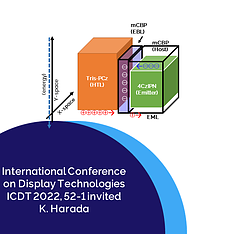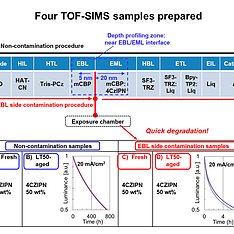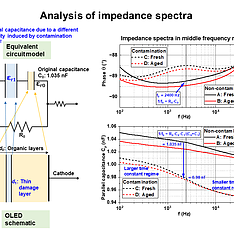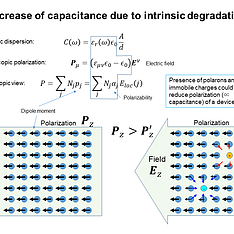Analysis of TADF-OLED degradation induced by extrinsic impurities
The methodologies we propose in this paper are powerful tools for optimization of highly efficient and long-lived future OLEDs as well as for development of next generation display architecture such as quantum-dot or perovskite light-emitting diodes. The emission zone analysis visualizes the actual zone of radiative recombination in an emission layer of the respective OLED with a single-shot measurement and a simulation. In addition, our customized OLED fabrication technique, in-situ exposure, enables identification of lifetime killers and clarifies whether a specific organic interface is susceptible to the influence of the killers.
Contamination by external impurities during device fabrication have a non-negligible impact on the device lifetime, and we have previously studied such an impact due to a deliberate contamination of extrinsic impurities by using a customized exposure chamber. Achieving the results from emission zone analysis of the respective OLED along the direction of electric field, we have further extended the methodology to elucidate the OLED degradation mechanism by a depth profiling of the irreversibly degraded molecules utilizing time-of-flight secondary ion mass spectrometry (TOF-SIMS). From TOF-SIMS, we reveal the presence of extrinsic trimethylsilyl-originated byproducts (which are oxidants) and the presence of oxygen-originates byproducts from the emission zone host and dopants. However, such chemical reactions cannot by themselves consistently explain the degree of luminance degradation from initial to 50 %. For a proper understanding of the mechanism, we discuss the impact of immobile charges in terms of electrical properties of the TADF-OLEDs.





